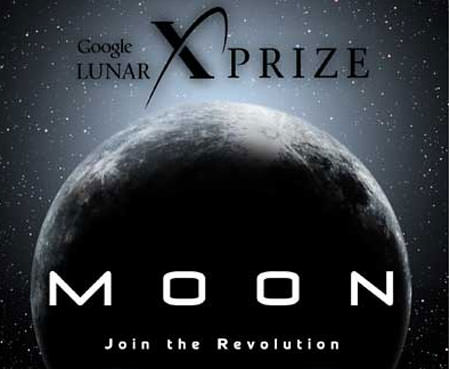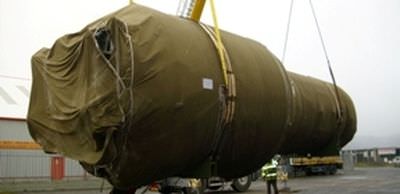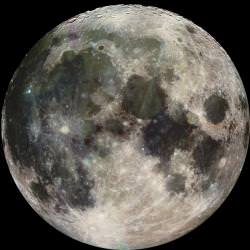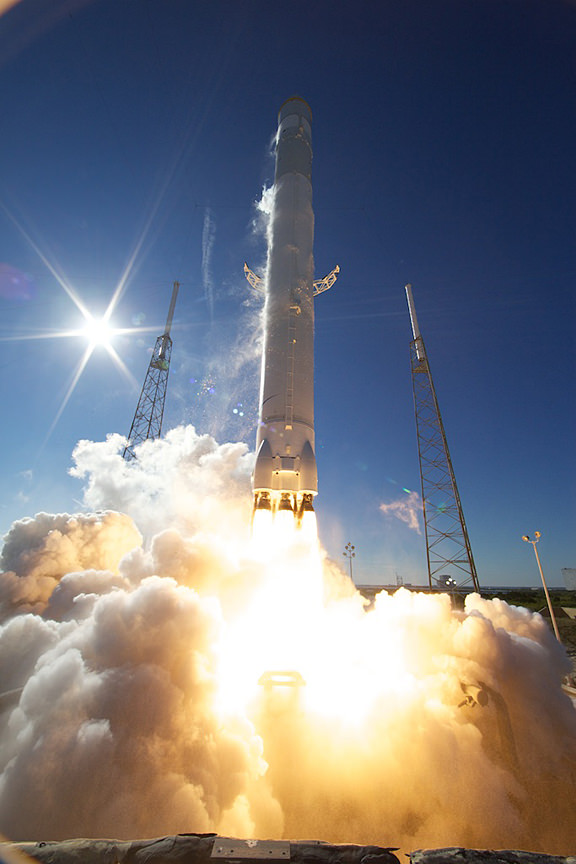OK, SpaceX, you’ve got us intrigued. This video released today by SpaceX says something “big” is coming on April 5, 2011. No embargoes, either!
When Will We Return to the Moon and Who Will it Be?
At the end of the movie “Apollo 13,” when the character of Jim Lovell says “I look up at the Moon and wonder, when will we be going back, and who will that be?” he probably didn’t have anything like the Google Lunar X PRIZE in mind. Similarly, when the GLXP was announced back in 2007, the founders had no idea that nearly 30 teams would be vying for the $30 million in incentive prizes to return to the Moon’s surface with a robotic craft.
Will Pomerantz, the former Senior Director of Space Prizes from the X PRIZE Foundation recalled an advisory committee meeting several years ago before the prize was announced. “We went around the room and asked everyone to estimate how many teams are going to compete in this,” Pomerantz said. “The answers ranged from zero on the low end to maybe a dozen or fifteen at the absolute max and that probably came either for myself or from Peter Diamandis, our founder. The fact that we have almost thirty blows us away, and we couldn’t be more thrilled.”
The X PRIZE Foundation recently announced the official roster of 29 teams that will attempt to send a robot to the Moon that travels at least 500 meters and transmit video, images, and data back to the Earth. The organization says this signifies a “new era of exploration’s diverse and participatory nature.”
The teams are headquartered all over the world — seventeen different headquarter nations — and most of the teams are actually multinationals, so team members are working in almost seventy different countries on every continent except for Antarctica.
“This is going to be the first time anything has been on the lunar surface since the final Soviet robotic mission in 1976,” Pomerantz said and those of us in the states really haven’t seen any data directly from the lunar surface since 1972, so we think that there’s at a ton to be learned scientifically, but also there’s a huge inspirational factor there for people to be able to see those images again.”
Of course, the robotic missions being designed are much less complicated and expensive than a human mission to the Moon.
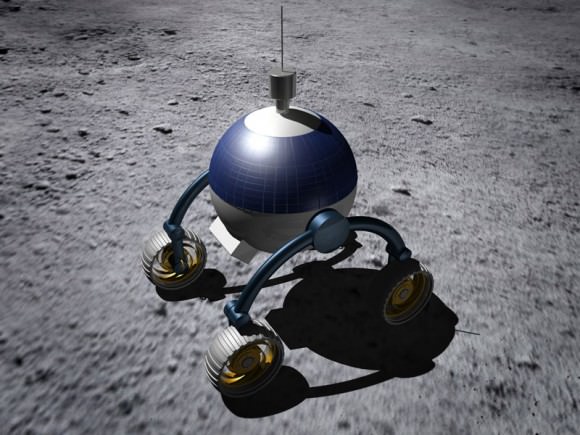
The concepts range from snake-like robots that slither along the surface to ball-shaped vehicles that can shift their mass internally move along the lunar surface to small robotic vehicles – “not too much bigger than the cell phone you’ve got your pocket,” Pomeranzt said – to rovers that look very much NASA- or ESA-designed vehicles. Others won’t rove at all, but reignite their engines to take off and fly to another location. This may allow them to explore totally different types of terrain that is totally inaccessible to a rover.
The landing sites that the various teams are shooting for differ as well. “Essentially everyone is going on the near side for obvious communication reasons,” Pomerantz said. “Almost everyone is going in a fairly low latitude and going in the equatorial zones.”
There are bonus prizes of several million additional dollars for teams that can go to particular sites, such the South Pole, where they could possibly confirm the findings at the LCROSS impact site, or if they go back to visit one of the Apollo landing sites or one of the sites of a non-human mission.
“I know that causes some concern for some people,” Pomerantz said. “People very rightly want to make sure that we are being respectful of those treasured historical sites. But I think it is important to recognize that no one values those sites more than the men and women around the world who are dedicating their careers to getting back to the surface of the Moon. They absolutely understand that those are our valuable treasures that need to be respected but they also understand that there’s an enormous amount to be gained from going back and respectfully revisiting the. There is some very interesting science that we can do by going back and seeing how the site and how those materials have changed over the past forty years.”
Why offer a prize to return to the Moon?
“We want to open the space frontier in the way similar to what we did it for the first X PRZE, the Ansari X PRIZE,” Pomerantz said. “We want to make space exploration and lunar exploration in particular radically cheaper. We think when you create a much lower price point, when you bring the price of missions down to a tenth to what it historically has been or even a hundredth of what it historically has been, you’re opening it up to a huge variety of new customers, new science communities, new industries that just can’t exist at the current price points.”
All the teams have to come up with their own funding.
“This is really a cash on delivery kind of model,” Pomerantz said. “But we don’t want to pay people to try. There are enough other people out there that are funding people to try new things. We want to reward people upon success. That means that no matter how crazy an idea might seem today, if it happens to be the best one, then we’ll reward it.”
Right now, the prize money is set to expire by the end of 2015, but the GLXP organizers are quite confident that at least one of the 29 teams will successfully reach the Moon before then. And obviously, NASA is confident, as well, as the space agency is offering a program called the Innovative Lunar Demonstration and Data Program, which is essentially $30 million dollars worth of data purchases from commercial efforts that reach the Moon.
“This is NASA saying for first time ever we are able to buy data about conducting lunar missions and about the Moon itself, rather than having to go out and pay for the acquisition of that data directly on the hopes that it will work,” Pomerantz said. “This is a great buy for NASA and I think they are getting a tremendous value and is a great way for teams to show their investors and supporters that, hey we’ve got a willing customer here. And NASA is not afraid of us; this isn’t an ‘us versus them competition.’ This is an area where our success is their success and vice versa.
Pomerantz is leaving the X PRIZE Foundation to begin work with Virgin Galactic. “I’ve loved every minute of being with the X PRIZE, but this was an opportunity just too good to pass up and I’m extremely excited about it even though I’m sad to be leaving X PRIZE.”
For more information about GLXP, see their website. See the complete roster of competing teams here.
Listen to an interview with Pomerantz on the 365 Days of Astronomy website.
Scientists to go Suborbital for Research
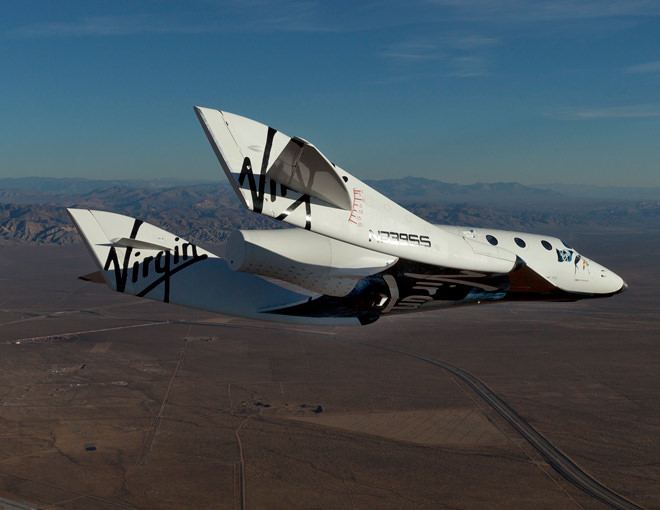
[/caption]
Think again if you believe the suborbital space market is exclusively for well-heeled tourists. The Southwest Research Institute has just inked deals with Virgin Galactic and XCOR Aerospace to fly up to 17 scientific research flights. Three scientists, including Dr. Alan Stern, former head of the Science Mission Directorate at NASA and current New Horizons Principal Investigator, will become some of the first scientists to fly on a commercial spacecraft to conduct scientific research. They will fly on board Virgin’s SpaceShipTwo and XCOR’s Lynx.
“We’re another step closer to the era of routine ‘field work’ in space research,” said Dr. Dan Durda, another SwRI scientist who is scheduled to fly. “More and more researchers will soon fly with their own experiments in space, and do it regularly enough to allow the important advances that come with iterative investigations. I’m looking forward to that future and helping it become a reality.”
“We at SwRI are very strong believers in the transformational power of commercial, next-generation suborbital vehicles to advance many kinds of research,” said Stern. “We also believe that by putting scientists in space with their experiments, researchers can achieve better results at lower costs and a higher probability of success than with many old-style automated experiments.”

The spacecraft will fly on short suborbital flights to altitudes greater than 107,000 meters (350,000 feet) above the internationally recognized boundary of space.
At least two SwRI researchers will fly on SpaceShipTwo, which can carry two pilots and up to six researchers, and later, there will be a dedicated six-seat research mission SS2. SpaceShipTwo’s large cabin enables researchers to work together in an “out-of-seat” micro gravity environment.
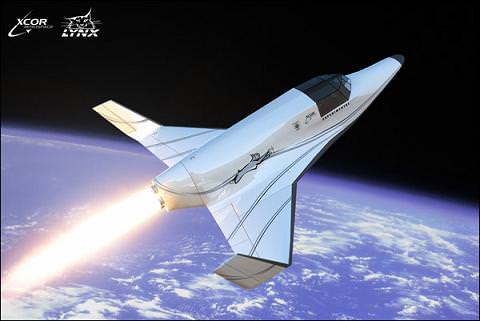
SwRI researchers will also fly at least six high altitude missions aboard XCOR Corporation’s Lynx Mark I high-altitude rocket plane, which carries a pilot and a single researcher at altitudes up to 200,000 feet. Lynx I is currently in development, with test flights expected to begin in 2012.
The types of research planned includes biomedical, microgravity and astronomical imaging experiments.
Besides Stern andDurda, Dr. Cathy Olkin is also scheduled to fly on the research flights. All three scientists selected have trained for suborbital spaceflight aboard zero-G aircraft, in NASTAR centrifuges and aboard Starfighter F-104 jet fighters in the last year.
“This is a historic moment for spaceflight,” said Commercial Spaceflight Federation Executive Director John Gedmark. “A scientific research institution is spending its own money to send its scientists to space. I expect that these scientists will be the first of many to fly to space commercially. As the scientific community realizes that they can put payloads and people into space at unprecedented low costs, the floodgates will open even wider.”
Sources: SwRI, Commercial Spaceflight Federation
Ares-1 Rocket Could Be Re-born as “Liberty”
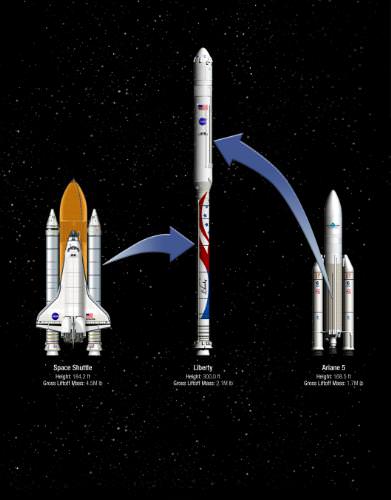
[/caption]
An idea too good to die, or a case of recycle, reuse, reduce? Two rocket companies are joining forces to use part of the Ares-1 rocket and combine it with elements of the Ariane 5 launcher to create a new launch system called Liberty that they say will “close the US human spaceflight gap.” US company ATK (Alliant Techsystems) and the European firm Astrium announced their collaboration today on a 90-meter (300-ft) rocket that would fit under NASA’s Commercial Crew Development-2 (CCDev-2) procurement. The companies say the new rocket could be ready by 2013.
“This team represents the true sense of international partnership in that we looked across borders to find the best for our customers,” said Blake Larson, President of ATK Aerospace Systems Group in a press release. “Together we combine unique flight-proven systems and commercial experience that allows us to offer the market’s most capable launch vehicle along with flexibility to meet a wide variety of emerging needs. Liberty provides greater performance at less cost than any other comparable launch vehicle.”
The partners say Liberty would be much cheaper than the Ares I, because the unfinished upper stage of the Ares I would be replaced with the first stage of the Ariane 5, which has been launched successfully 41 consecutive times. The lower stage of the Liberty, a longer version of the shuttle booster built by ATK, would be almost the same as what was built for Ares-1.

Since both stages were designed for human-rating, the collaborators say this “would enable unmatched crew safety.” The team has planned an initial flight by the end of 2013, a second test flight in 2014, and operational capability in 2015.
Liberty would be able to deliver 20,000 kg (44,500 lbs) to the International Space Station’s orbit, which would give it a launch capability to carry any crew vehicle in development. This is less payload capability, however, than the 25-ton payload that the Ares-1 was advertised to deliver to the ISS.
With the announcement of the collaboration (and quick turn-around) the companies are hoping to be the recipient of some of the $200 million in funding NASA is planning to give out in March 2011 to private companies that are developing space taxis. Smaller NewSpace companies like SpaceX and , Orbital, along with big companies Lockheed Martin and Boeing are all vying for the CCDev-2 contracts.
With some space experts and Congress expressing concern about the length of time it might take for commercial companies to provide reliable transportation to space, as well as concerns about relying on the Russian Soyuz vehicles, this new collaboration could fit NASA’s needs nicely. Plus, the collaborators are hoping the new Liberty rocket will be a bargain compared to other contenders. They are targeting a price of $180 million per launch, which is slightly less than the Atlas V rocket launches by the Boeing-Lockheed Martin United Launch Alliance, ($187 million).
The two companies have touted the new rockets’ ability to carry a wide array of spacecraft and satellites.
“The Liberty initiative provides tremendous value because it builds on European Ariane 5 launcher heritage, while allowing NASA to leverage the mature first stage,” said former NASA astronaut Charlie Precourt, Vice President and General Manager of ATK Space Launch Systems. “We will provide unmatched payload performance at a fraction of the cost, and we will launch it from the Kennedy Space Center using facilities that have already been built. This approach allows NASA to utilize the investments that have already been made in our nation’s ground infrastructure and propulsion systems for the Space Exploration Program.”
If NASA chooses the Liberty system and it works well, it could mean that the money NASA spent on the Ares rocket was not wasted after all.
ATK has put together this video about “Liberty”
Source: ATK
Private Space Company Obtains Old Russian Space Station Modules
[/caption]
The private spaceflight company Excalibur Almaz has obtained two partially completed Almaz space station modules from Russia and brought them to the company’s home base on the Isle of Man. The modules and Excalibur Almaz’ reusable return vehicles were developed by a Russian company in the 1970’s but were never flown. Excalibur Almaz hopes to offer week-long orbital space flights beginning as early as 2013, using the once top-secret Russian capsules and modules.
In 2009, EA reached an agreement JSC MIC NPO Mashinostroyenia (NPOM) of Russia, the company that originally built the spacecraft, and purchased both the Reusable Return Vehicles rockets and modules for the Almaz space station. In the 1970’s, the RRVs went through nine flight tests, with two RRVs flown to orbit several times.
EA will work on updating the spacecraft to conduct crew and cargo space missions for private individuals, corporations, academic institutions and national governments.
In a press release, EA said the stations will be initially stored, followed by research, testing and possibly completion and launch to orbit.
“EA’s initial flights to orbit will be in the flight tested Excalibur Almaz Reusable Return Vehicles joined to and supported by service module living and working habitats,” EA said. “The space stations themselves are part of EA’s long-term business plan. It is not economically feasible to launch and sustain them on orbit until the company’s flight rate reaches six or more flights per year.”
EA Founder and CEO Art Dula said, “This is another significant landmark towards achieving our stated goals with continuing technical support from leading
The Almaz space stations are approximately 11 meters long and four meters in diameter; and are directly related to the module design used on the International Space Station as well as the earlier Russian Salyut and Mir space stations. Other unique features of the Almaz stations include the largest window ever developed for a spacecraft, boasting over two meters of panoramic view of the Earth and stars.
Source: Excalibur Almaz
Map of Future Lunar Landing Sites
Here’s the map of the future: a look where all the contestants in the Google Lunar X PRIZE intend to land on the Moon, in hopes of nabbing the $30 million in prizes available to the first privately funded teams to safely land a robot on the surface of the Moon. Dr. Philip J. Stooke of The University of Western Ontario has put together a this very nifty proposed landing site map based on published data from the Google Lunar X PRIZE Teams. According to Michael Doornbos from the Evadot website, assisting in the visualization, they will be updating the map regularly as the public information gets updated. Click on the image to see the original (and larger version) on Evadot.com
If you remember, the participants in the Google Lunar X PRIZE not only have to land their robot, but it also has to travel 500 meters over the lunar surface and send images and data back to the Earth. Teams must be at least 90% privately funded. The GLXP hopes to ignite a new era of lunar exploration by offering this largest international incentive prize of all time.
Find out more at The Google Lunar X PRIZE Website
More Images, Details on SpaceX’s Dragon Flight
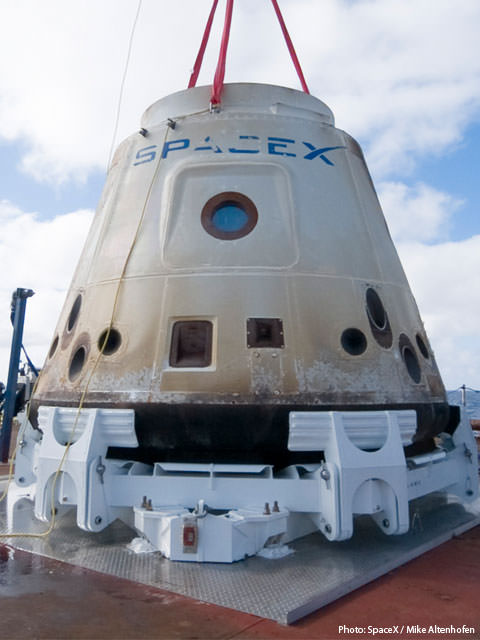
[/caption]
SpaceX has released more images and more details about the successful flight of Falcon 9 and the Dragon capsule that took place on December 8, making SpaceX the first commercial company in history to re-enter a spacecraft from Earth orbit. Here’s an image of Dragon safely on board a ship after splashdown. SpaceX said Dragon orbited the Earth at speeds greater than 7,600 meters per second (17,000 miles per hour), reentered the Earth’s atmosphere, and landed less than one mile from the center of the targeted landing zone in the Pacific Ocean. Wow, that’s some pretty good precision. See more images and details of the flight below.
The above image also shows a look at Dragon’s PICA-X heat shield, which SpaceX says is highly advanced. They worked closely with NASA to develop the heat shield, a variant of NASA’s Phenolic Impregnated Carbon Ablator (PICA) heat shield, which NASA used for the Stardust sample capsule returned, which set the record for the fastest reentry speed of a spacecraft into Earth’s atmosphere — experiencing speeds of 46,510 kph (28,900 mph).
NASA made its expertise and specialized facilities available to SpaceX as the company designed, developed and qualified the 3.6 meter PICA-X shield in less than 4 years at a fraction of the cost NASA had budgeted for the effort. The result is the most advanced heat shield ever to fly. SpaceX said one heat shield can potentially be used hundreds of times for Earth orbit reentry with only minor degradation each time, and that this flight proved it. During the press conference following the successful flight of Dragon, SpaceX CEO Elon Musk said this heat shield could even withstand the much higher heat of a moon or Mars velocity reentry.
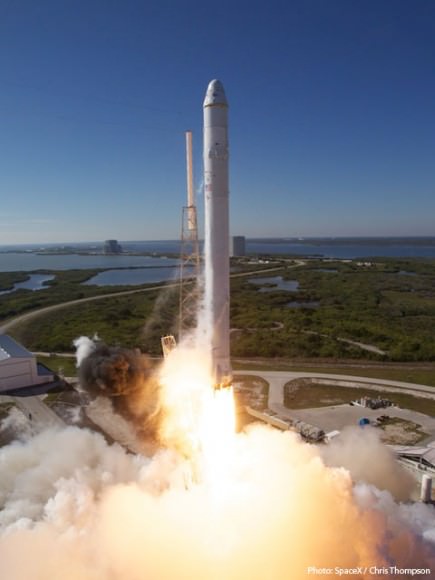
SpaceX said all nine Merlin engines performed “nominally,” which means they worked wonderfully. Together, the rocket engines generate one million pounds of thrust in vacuum, getting the entire stack off the ground and powering the first phase of flight. The rocket reached maximum dynamic pressure (the point at which aerodynamic stress on a spacecraft in atmospheric flight is maximized, also known as Max Q) approximately 1.5 minutes after launch. The first stage separation occurred a little over three minutes into flight.
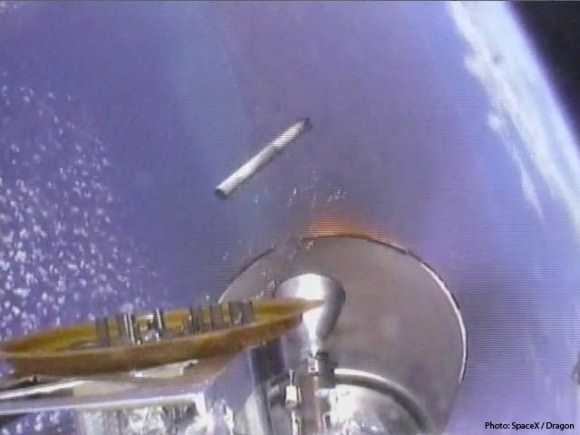
The single Merlin Vacuum engine of Falcon 9’s second stage then ignited to continue carrying the vehicle towards its targeted orbit. After stage separation, the nose cap at the front of the Dragon spacecraft safely jettisoned. The second stage fired for another four and a half minutes, until it achieved orbital velocity, and then the Dragon spacecraft separated from the second stage to begin its independent flight.
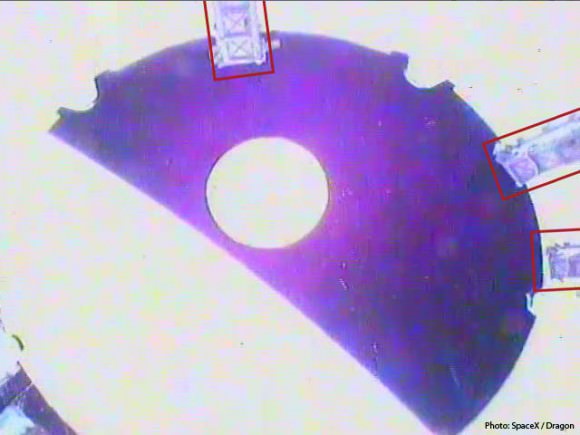
SpaceX said Dragon’s first-ever on-orbit performance was 100% successful in meeting test objectives including maintaining attitude, thermal control, and communication activities. While in orbit, eight free-flying payloads were successfully deployed, including a U.S. Army nanosatellite—the first Army-built satellite to fly in 50 years.
After separation of the Dragon spacecraft, the second stage Merlin engine restarted, carrying the second stage to an altitude of 11,000 km (6,800 mi). While restart of the second stage engine was not a requirement for this mission (or any future missions to the ISS), it is important for future Geosynchronous Transfer Orbit (GTO) missions, where SpaceX hopes to bring satellites for paying customers.
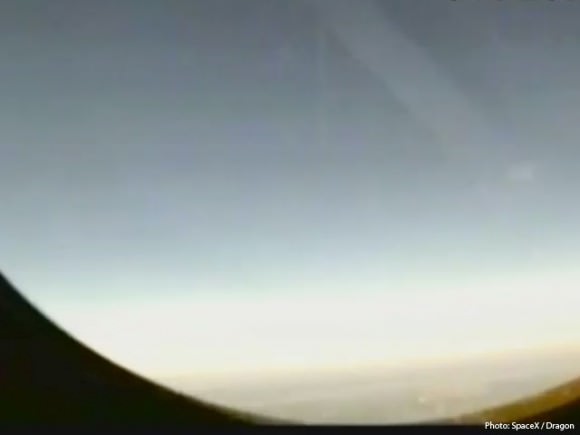
What’s the view like from inside Dragon? Here’s a view looking out Dragon’s porthole, with a view of Hawaii. After the second stage separated, there was an expected loss of signal as the Dragon spacecraft passed over the horizon as viewed from the launch site. At that point, SpaceX activated Dragon’s video signal from a camera set up inside the capsule, delivering the first ever video sent from Dragon on orbit.
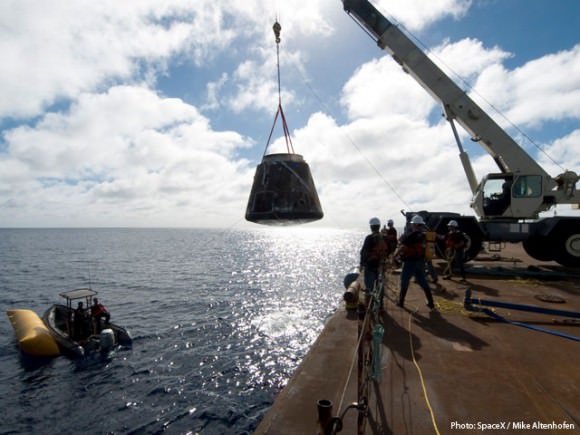
For this first flight under the Commercial Orbital Transportation Services (COTS) program, everything went perfectly, with a nominal flight profile that included a roughly 9.5-minute ascent, two Earth-orbits, reentry and splashdown. Falcon 9 delivered Dragon to orbit with an inclination of 34.53 degrees—a near bull’s-eye insertion, according to SpaceX.
Now, on to the next demonstration flight, which will go to the International Space Station, and maybe even dock, if SpaceX has anything to say about it.
See our previous gallery of images and videos from the launch.
Source: SpaceX
Music From Space: DIY Satellite Will Capture Sounds of Ionosphere
[/caption]
For a space geek, the ultimate do-it-yourself project would be building a satellite in your basement. Astronomer and writer Sandy Antunes is doing just that, but there’s an artsy side to this project, as well. His satellite, called Project Calliope, will collect data from the ionosphere and send it back to Earth in sound-based MIDI files, allowing music to be created from space. “It’ll be an ionospheric detector transmitting sonifiable data back to Earth,” said Antunes. “Conceptually, it’s a musical instrument in space, played by space rather than just after-the-fact sonified.”
Antunes decided to embark on this project after the commercial space company InterOrbital began offering small DIY, soda-can-sized picosatellites for the reasonable price of $8,000 – which includes the launch.
One of the major reasons for doing the project is to prove that anyone can build a satellite in their basement – although Antunes admits it is also a fairly cheap midlife crisis expenditure, especially when his boss at the Science 2.0 blog, Hank Campbell, decided to pitch in half of the price.
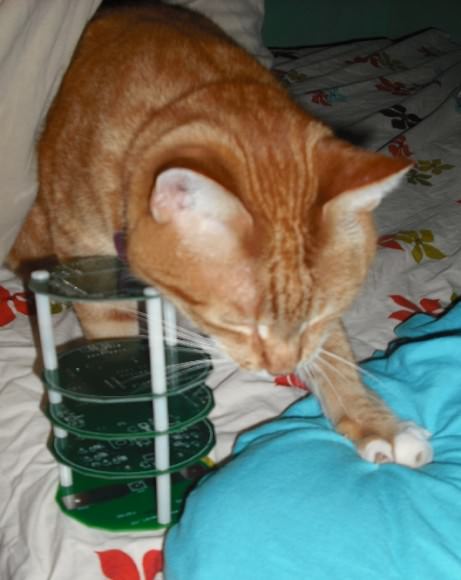
“When people ask, ‘where did you get your idea?’ that misses the mark,” Antunes told Universe Today. “The question should be, ‘What idea do you have?’ We’re at the point now where a single hobbyist can send something into orbit to do something useful. I think this is a new space age way of thinking. I’d like to see if this inspires people to do something cooler than me. To me that is what science is all about.”
Antunes is documenting his experiences on his blog, The Sky By Day. “I’m making mistakes so that other people won’t have to make them,” he said. “Hopefully I can make the path will be easier for others.”
Plus, Antunes hopes to answer the big question of what space sounds like. The sun interacts with the Earth’s magnetic field in the ionosphere, creating all sorts of activity; there are also changes in temperature and light.
“People don’t know what space sounds like,” he said. “You walk to ocean and close your eyes and you can hear the roar of the waves, the rushing of water, the moments of quiet; and you can get a good idea of what activity is going on. But we don’t know have an idea of the activity of space, or the ionosphere, where this satellite is going. Sonifying the ionosphere will give people an idea of the ebb and flow of it – how there are constant events going on, sometimes catastrophic-type events but there is also a quiescent stage.”
When the data comes back to Earth, Antunes will give musicians free rein. “Musicians can take it and rework it, much like how musicians have ambient noise, nature sounds, or whale songs in a piece,” Antunes said, “but in this case they can take sounds from the ionosphere. We are making it royalty free so anyone can use it.”
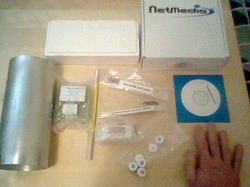
Antunes said working with the pre-packaged TubeSat Personal Satellite Kit is different than what he initially imagined. The Hubble Space Telescope, it is not.
“It has a power system that’s basically two lithium AA batteries hooked together, a little stick of gum computer chip, and some very fragile solar cells,” Antunes said. “I thought it would be hard science and tricky engineering and unsolved problems, but everything I’m getting is off the shelf. The sensors are plug-ins, so the primary work is integrating things. So there are very different problems from what I thought, but this tells me that you don’t have to have a PhD to put up a satellite.”
The current liftoff date for the first InterOrbital Tubesat launch is March or April of 2011. The company has built the rocket engines and they are now doing testing and test firings.
Antunes knows that testing a rocket has a lot of ambiguity, and he anticipates some delays, as even when he has been part of a NASA project, he has never had a launch go on time. This being the first launch of InterOrbital’s commercial satellite venture, if it blows up, Antunes will get a chance to refly his satellite.
Project Calliope will go into a short-term polar orbit, and last about 6-12 weeks, so it is a short term experience, Antunes said.
But he will be tweaking his satellite right up until delivery.
“I wanted to do something that NASA cannot, and that a University wouldn’t, combining art and science,” Antunes said. “I like the idea of flying something in space whose purpose is to make music until it dies– music from science.”
The SpaceX Business Plan: Help Build a Spacefaring Civilization
[/caption]
Elon Musk conceded that the space business world is an extraordinarily difficult place to make money. But that isn’t his main priority anyway.
“The reason I’m doing SpaceX,” Musk said during the Falcon 9/Dragon post-flight press conference, “is that I just happen to have a very strong passion for space and I want us to become true spacefaring civilization and even a multi-planetary civilization. That is my goal for SpaceX.”
“Other companies have profit goals and such, but for SpaceX it is really about furthering the cause of space,” Musk continued. “We must bring in more money that we spend, but maximizing profitability is not really what it is about.”
Musk said he has been upfront with investors in SpaceX that a high profit margin is not his priority, “and so they can’t be mad when that doesn’t happen.”
He added that he wants to make science fiction –“what you read about the future,” — to become reality.
The discussion of profit started when Musk revealed that the Falcon 9 second stage was restarted and flew to 11,000 km (6,800 miles) to release some secondary satellite payloads, including a U.S. Army nanosatellite. SpaceX was paid minimally for only some of those payloads, Musk said.
Wednesday’s test flight was the first of three financed by NASA under a $278 million Commercial Orbital Transportation Services (COTS) agreement, the main cog of a program designed to encourage commercial space companies to develop rockets and spacecraft to deliver cargo – and later perhaps crew — to the International Space Station after the space shuttle is retired next year.
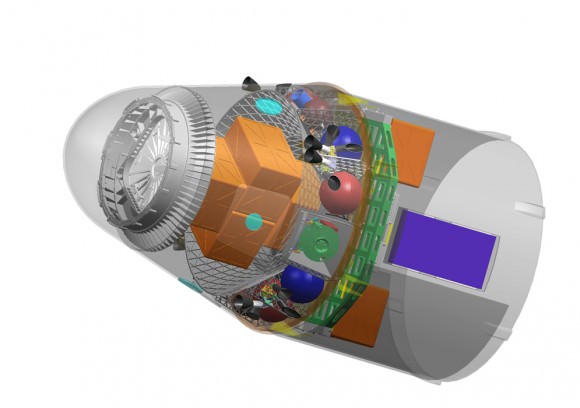
After the Dragon’s initial success, Musk said he hopes NASA will consider allowing Dragon to go directly to the International Space Station on the next flight, estimated to take place in mid-2011. Since Dragon is capable of carrying 5987 kg (13,200 pounds) of cargo in pressurized and unpressurized cargo bays, it can bring more than twice as much cargo as Russian Progress resupply ships.
Musk also thinks Dragon can compete with Lockheed’s Orion capsule, the only part of the Constellation Program that NASA has maintained.
“What I’m hopeful for is that NASA may consider the Dragon as good as Orion,” Musk said. “It is good to have multiple companies doing something, so Lockheed has Orion and we have Dragon and we would certainly like to have Dragon considered for anything that Orion could do. Perhaps we could do more because our heat shield is significantly more advanced.”
While Musk said SpaceX could not have gotten where it is today without NASA’s support and path-making, Alan Lindenmoyer, manager of NASA’s Commercial Crew and Cargo Program Office, said with the success of this flight, the benefits might be going both ways.
“As much as SpaceX is learning from NASA, there are certainly things we can learn from SpaceX,” he said.
Gallery: Dragon/Falcon 9 Launch and Recovery Photos, Videos
[/caption]
Enjoy a few glimpses at history from the Dec. 8 launch of Falcon 9 and Dragon.
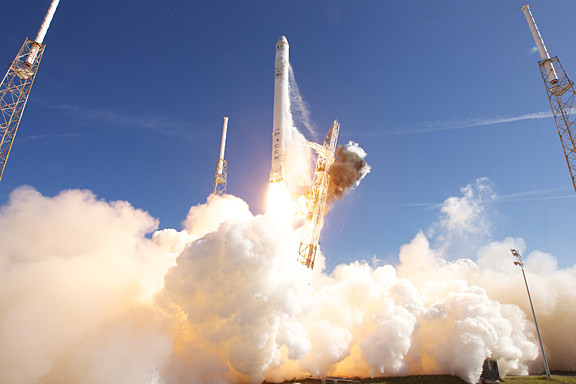
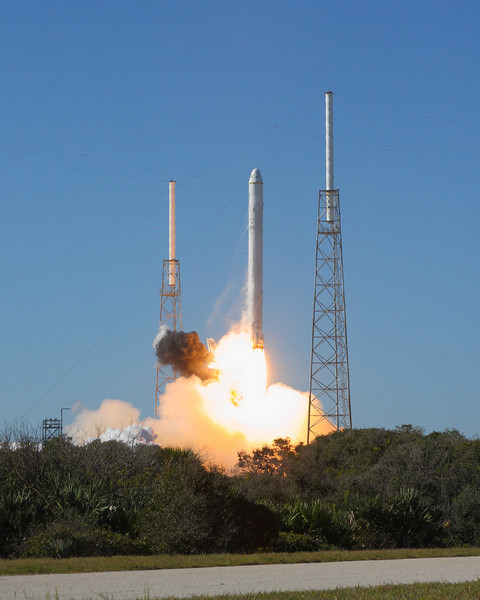
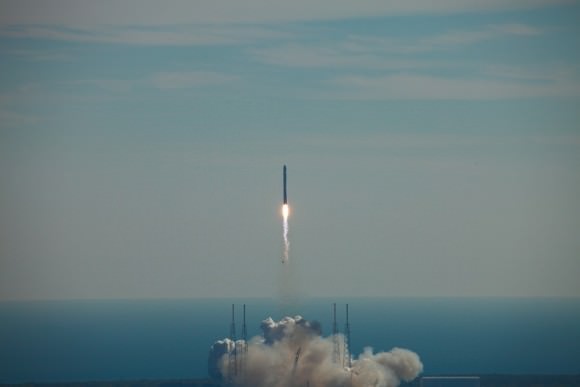
Here is video from a camera on Dragon while in orbit.
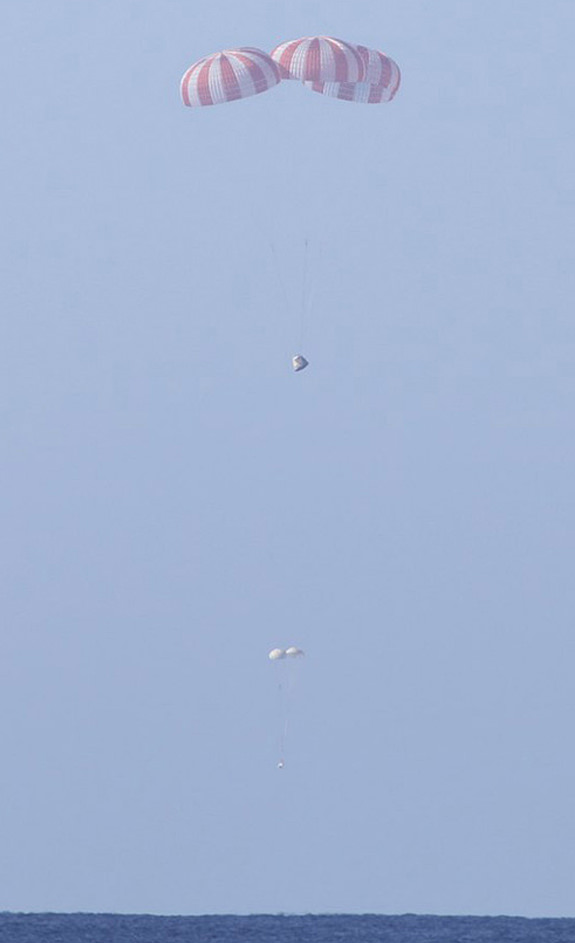
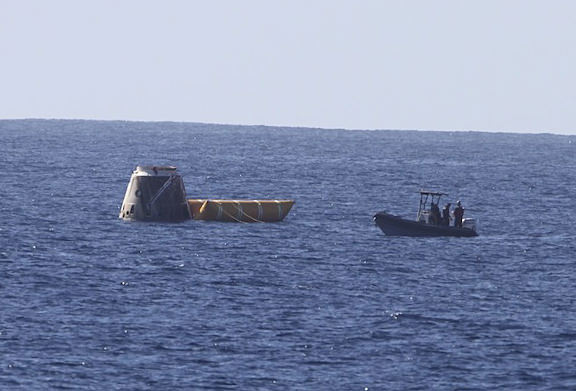
And for good measure, here’s the launch video again:
NASA Administrator Charlie Bolden’s statement on the success of the launch:

